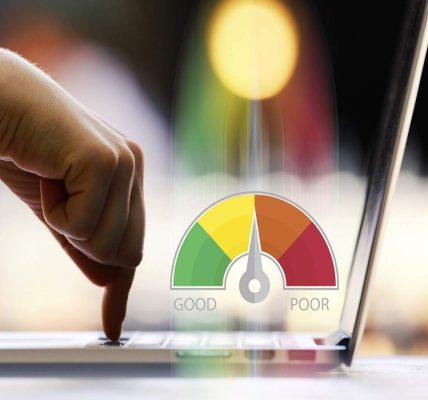Organizations routinely look for ways to constantly enhance their operations as the world, markets and technology change rapidly. Business process improvement is a frequent method via which they might do this. Understanding this idea will make it easier for you to see how an organization might benefit from a disciplined approach to process optimization.
What is business process improvement?
Business process improvement, or BPI, is the process through which organizations examine their present methods and operations in order to see ways that they might increase their productivity or efficiency. To accomplish this, a number of conferences, talks, meetings and evaluations must be held to fully grasp how teams and people operate. Teams of leaders can subsequently identify potential changes to make in order to have more efficient business procedures. Evaluation of organizational tools and individual skillsets can also be part of business process improvement to identify areas for additional development or investment.
Who is responsible for enhancing business process improvement?
Business intelligence analysts are responsible for enhancing business process improvement. These professionals study and examine information to find areas where adjustments may be made to boost productivity and efficiency, while advancing the overall objectives of an organization. The responsibility of business intelligence analysts might change depending on the organization and sector in which they work. However, some common responsibilities include:
- Examining operational procedures.
- Checking and confirming consumer information.
- Controlling the outcomes of data and statistics.
- Examining competition data and examining the reactions of competitors.
- Creating guidelines and processes for data gathering and evaluation.
- Finding areas where corporate strategies and procedures might be improved.
- Providing presentations and reports to the senior management in order to convey information and solutions.
To pursue a career as a business intelligence analyst, the first step is to earn a bachelor’s degree in a related field such as data sciences, business administration, computer science, statistics, economics, etc. You should also consider an advanced degree such as a Master of Business Administration (MBA) or other post-graduation or doctoral degree to further enhance your skills and open up more opportunities for yourself to get a better job in the market.
Marymount University offers an excellent online Doctorate of Business Administration in Business Intelligence designed for working professionals who want to further their careers. You may be thinking, why should you become a BI analyst? If so, read Marymount University’s blog, linked to here, to learn more about the responsibilities, roles and skills needed to become a successful business intelligence analyst.
What is the purpose of business process improvement?
Below are various reasons why a company might utilize business process improvement.
Reducing expenses
As a consequence of potential redundancies or wastefulness, business process improvement frequently reduces expenses for enterprises. Following their study, executives can pinpoint strategies to decrease wastage or boost output.
Efficiency in procedures
Business process improvement helps businesses create processes that are easier to execute. Administrators or leaders can analyze various stages in the procedure, spot areas where efficiency improvements might be made, and inform organizations of the best ways to operate.
Raising the quality of products
It can also help businesses raise the standard of their production. They may discover opportunities for improvement through these process assessments or get additional information about how suppliers perform to enhance their client offers.
Increasing production
Business process improvement can also assist businesses in increasing efficiency and productivity by discovering solutions to reduce mistakes in their operations. They might spot particular problems, such as process bottlenecks, and figure out how to increase production speed.
How does business process improvement work?
To make sure that business process improvement can benefit your company, follow these steps.
Select a procedure to focus on
You may choose whatever operation or procedure you want to enhance initially because organizations frequently have a variety of them. You can observe different areas, listing the numerous procedures they use and selecting one over the other. It might be helpful to start with the toughest or most complicated procedures and figure out which ones could have problems or cause the most delays. By addressing these through business process improvement, the most significant impact on enhancing organizational operations may be achieved.
Examine the process issues
You can find additional aspects of a procedure that can be problematic when you concentrate on just one of them. For instance, the sales staff may discover that due to bugs or restrictions in the program, they are experiencing trouble logging client data. You may understand how to solve problems by being aware of the procedure areas that could lead to delays, increased expenses or wastage.
Conduct a root-cause analysis
You conduct a root-cause assessment when you pinpoint the precise source of a problem. There are many methods to accomplish this, but it primarily involves carefully examining the issue and taking into account all the factors that might influence the stage in the process. For instance, marketing materials’ design might be consistently late. The fundamental problem might be an insufficient amount of knowledge, a flaw in the system, or a shortage of materials that would make this step go more quickly.
Create a strategy
You can develop a solution strategy once the issues and their root causes have been determined. This might relate to people or equipment required to carry out tasks inside a process. For instance, you may choose new features for a system that you can incorporate into a future update in order to enhance a timetable and the user experience. If an insufficient amount of knowledge or skills is the main issue, you may also construct a growth plan for your staff. Think about making a timeline to help you pinpoint the deadline for this process improvement.
Execute the plan
The execution of the plan may entail getting new equipment, providing training and workshop sessions, or other initiatives to assist enhance various process elements. To show employees what changes they can expect, you might draw a business process diagram showing the process in both its present form and its potential future state. As change management is crucial in this situation, it may be helpful to make the transition go smoothly by interacting with employees effectively and giving them the tools they need to carry out their tasks with minimal interruption.
Analyze the outcomes
You might assess the outcomes after some time using the newly developed method to see whether your objectives were met or fulfilled. You may also conduct a team member poll to find out how they feel about and comprehend the process improvement and its results. Business process improvement is a continuous process, so you may utilize the initial workflow as a springboard for enhancing connected processes and sub-processes or investigating other ones entirely.
Techniques of business process improvement
There are various widespread business process improvement techniques, including the following.
Agile
Agile employs brief timeframes, or phases, to finish various process parts. Progressive enhancement is a goal of agile management, which entails short manufacturing phases. ‘Sprints’ is another term used for these short manufacturing phases. Teams from different departments collaborate while adhering to the techniques and concepts of agile management to enhance or add new technological features to goods. It helps with continuing to improve business processes. In business process improvement, you may carry out the procedures necessary to enhance a process on these schedules or break down processes such as deployment and strategy into more manageable sprints.
Lean
Lean implies carrying out activities as efficiently as possible while producing a minimum of waste. Lean tools may assist in identifying problems, including excessive manufacturing, delays, transportation and product flaws. They can also provide ideas regarding how to fix them throughout their processes. This also entails routinely reviewing your procedures to make sure that everyone on the team can contribute to the fullest extent possible while carrying out their responsibilities.
Six Sigma
Six Sigma provides recommendations on how to run an organization most efficiently. With the application of the Six Sigma tool, organizations may find errors and the source of problems and create a strategy for fixing them. It is a technique that is frequently employed in project management to aid in the learning, development and evaluation of business process improvement. The goal of Six Sigma tools is to increase client satisfaction while avoiding problems such as extended processing times and product flaws.
Theory of constraints
The theory of constraints can indicate which procedures can benefit from change by using a similar set of criteria to assess every procedure in the workplace. Organizations discover the largest problems that have the most impact on their processes using the theory of constraints technique. They can then decide how to address these problems in order to maximize effectiveness and productivity.
Kaizen
The kaizen technique focuses on ways to enhance each component of an organization. The approach is commonly used by management departments to enhance corporate operations, boost team output, and promote secure and effective operations. The kaizen technique emphasizes making gradual and minor adjustments whenever there is a requirement for improvement. It is a continuous process that includes input from every employee, which may make it an approachable way to implement changes throughout an organization.
Total quality management
Business-centered procedures, including sales and marketing, must be regularly revised and improved. Total quality management (TQM) helps to make corporate processes more scalable and conducive to ongoing development. When using TQM techniques, data collection is necessary to analyze process outcomes and identify areas for potential enhancement. Using this strategy will primarily help to decrease waste in commercial operations.
Benefits of implementing business process improvement
The following are a few major advantages of executing a business process improvement.
Boosts productivity
Productivity often rises when an organization’s process is reviewed and improvements are made to make it more effective. The business could boost production while utilizing the same or perhaps fewer inputs than normal. For example, automation of a process enables staff to do jobs more quickly. In comparison to a manual method, they could be able to provide higher-quality items at a faster rate. By carrying this out, the business could be able to finish additional jobs or initiatives.
Lowers the risk
Performing a risk assessment to identify possible dangers of a modified process is part of the practice of enhancing business processes. This assists the business in lowering or eliminating the risk connected to a certain activity or procedure. For example, switching to an automated procedure from manually entering information helps lower the possibility of human computing mistakes.
Guarantees consumer and staff satisfaction
Due to the elimination of repetitive and non-value-adding operations, a well-constructed business process can be simpler to manage. Staff and workers can concentrate on accomplishing necessary duties in a more accommodating and effective working atmosphere. This usually boosts their sense of job satisfaction and encourages them to provide higher-quality services. Clients receive greater value for what they spend when staff adopt modernized technology and procedures. This promotes brand loyalty because clients have faith in the company to provide high-quality goods or services.
Enables compliance with standards and regulations
It is often simpler to maintain compliance as process improvement calls for routine evaluation of the new system. It develops a flexible framework for handling end-to-end compliance rules. This is useful for avoiding unanticipated fines and consequences. Transparency is enhanced, and it could be simpler to execute legal obligations if compliance is included in a business process.
Saves cost
Techniques and methods that aid in the identification of wasteful and duplicate tasks are used in process improvement. Getting rid of certain practices and waste products can help conserve resources. Finding practical ideas that might result in enhanced process outputs is another benefit of this method. The organization may be able to concentrate on other tasks and foster overall corporate growth by conserving resources.










